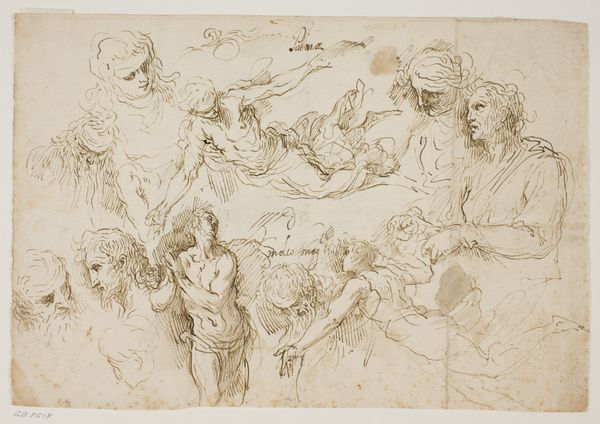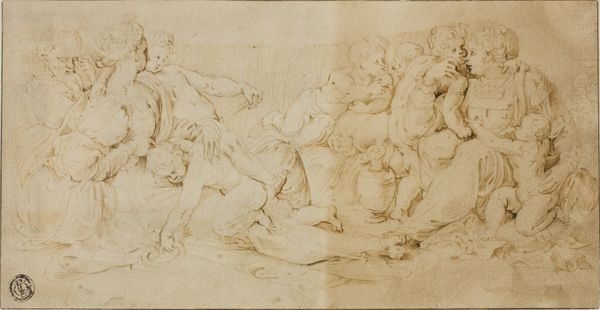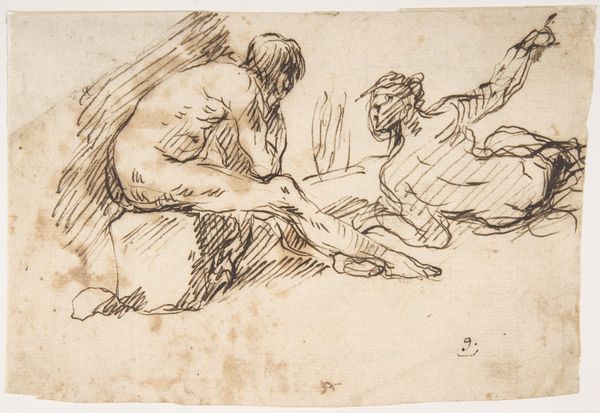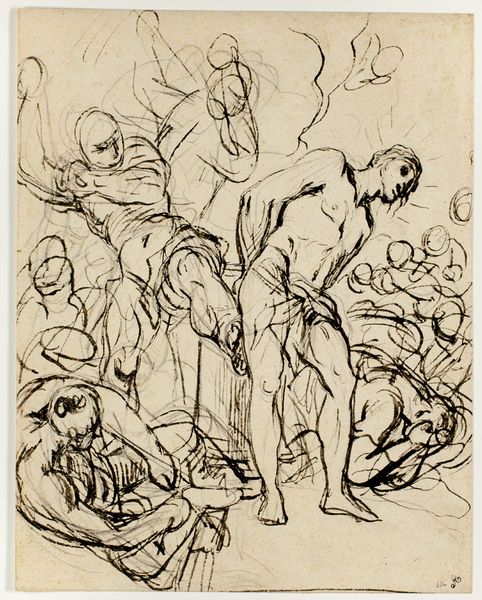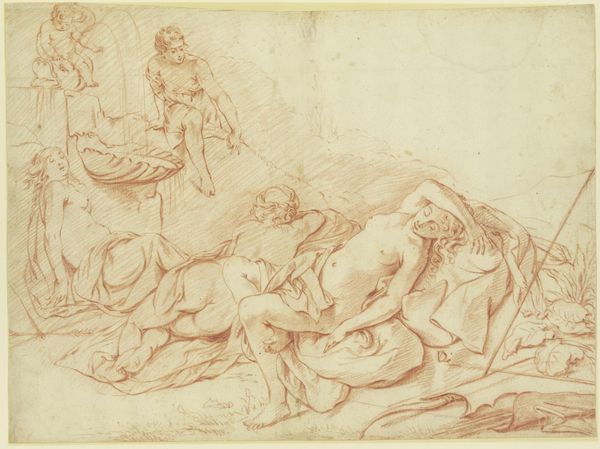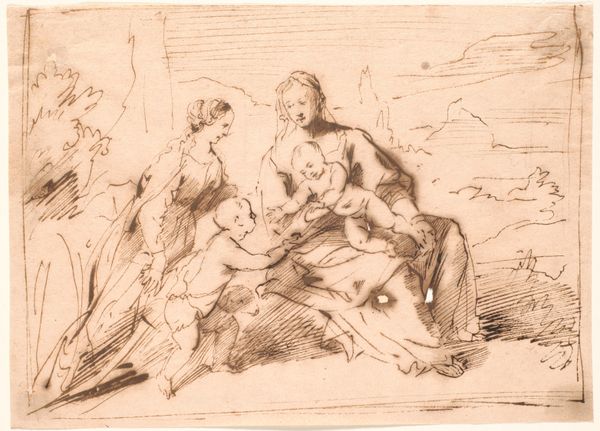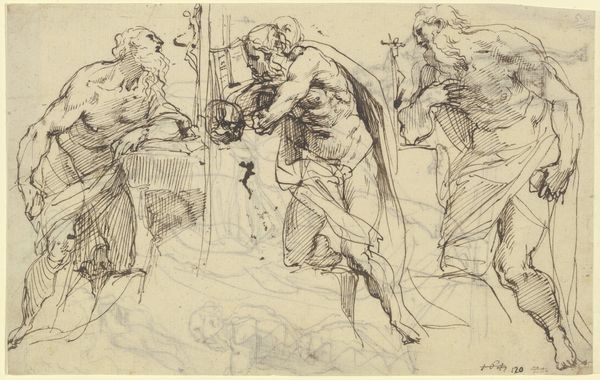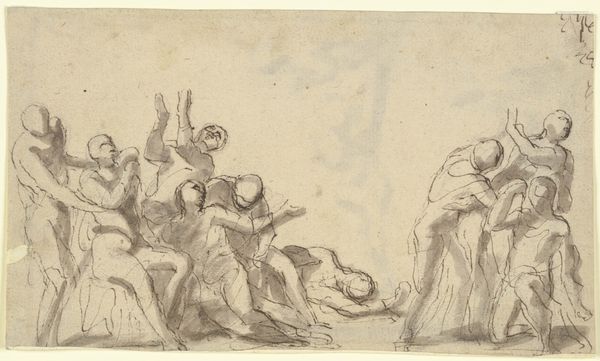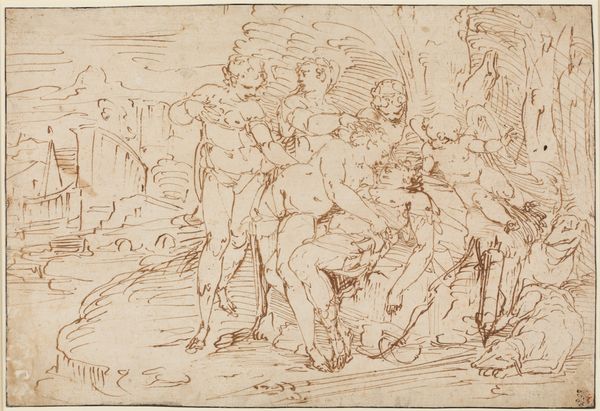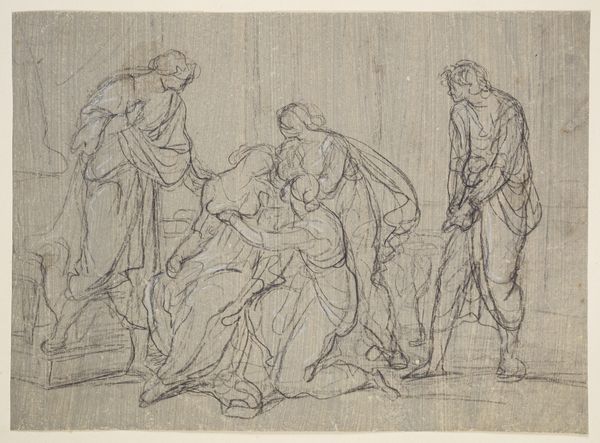
Figure Studies for the Salon du Roi, Palais Bourbon 1833 - 1835
0:00
0:00
Dimensions: Overall: 10 3/4 x 15 3/8 in. (27.3 x 39 cm)
Copyright: Public Domain
Curator: Today, we are examining Eugène Delacroix’s “Figure Studies for the Salon du Roi, Palais Bourbon,” created between 1833 and 1835. It’s currently held in the Metropolitan Museum of Art. Editor: The initial impression is one of raw energy, even chaos. Figures intertwined, sketched rapidly with such visible movement; it is almost frenetic, a snapshot of a very complex vision in progress. Curator: Delacroix's focus here isn’t so much on finished detail, but on capturing the dynamics of the human form, the raw emotions, the very essence of conflict or struggle, perhaps intended to be the history of human progress as told via grand allegorical painting. The contorted poses, the exaggerated musculature—these aren't merely physical studies. What cultural references do you see emerging? Editor: Immediately, the classical nude emerges, filtered through a Romantic lens. We observe the tension and release of line and shadow, and how Delacroix uses minimal strokes to communicate so much, almost Baroque dynamism. The figures almost escape their boundaries! Curator: Exactly! This harkens back to classical sculpture, like the Laocoön group. Delacroix would have certainly absorbed those visual stories and their potent display of agony and striving. He also looked toward Rubens and the old masters in Venice and beyond. What can you say about the ink itself as a signifying aspect here? Editor: The sepia ink gives the studies a classical feeling, which in my view ties it to traditions while creating a strong value structure of contrasting tonalities. The lack of color brings the observer's eye straight to the compositional forms themselves. It is the underlying foundation upon which all the narratives that the symbols carry depend. Curator: Well stated. It reflects the intensity and the turbulence so core to the Romantic spirit. These aren’t just preliminary sketches. They are a powerful study into the very nature of human conflict. Delacroix is evoking these very loaded cultural signs to generate intense feelings, particularly ideas tied to heroism, history, even revolutionary action. Editor: Indeed. This ink on paper seems light enough, yet it anchors monumental themes about which great walls have been decorated throughout history. Curator: Thank you. These studies give us a crucial glimpse into Delacroix's creative method as it connects historical memories with contemporary expressions. Editor: Yes, a journey from initial inspiration to visual form. It is all embedded there in ink.
Comments
No comments
Be the first to comment and join the conversation on the ultimate creative platform.

